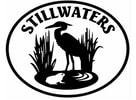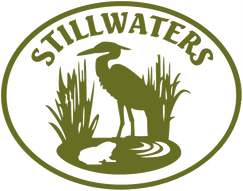Bogs
Bogs are important parts of a natural ecosystem. They often occur in regions where cold and wet characterize most of the year. Much like swamps, they are wet and soggy areas that don’t seem to have much activity. Both areas (swamps and bogs) are key habitats for numerous species, different species for each since they are found in different places. Some species are even specialized to the conditions found in a bog, meaning they thrive in those areas and don’t do as well elsewhere.
There are several key differences between bogs and swamps. Although both have a lot of standing water, water from rivers is funneled into swamps, whereas bogs have water from rain. Bogs have poor drainage, so rainfall will mostly stay until it is absorbed or evaporated. Bogs are also low in nutrient content, but they do make great habitat for many animals and also act as fantastic carbon sinks (an area or ecosystem that absorbs a large amount of carbon and acts as a “sponge”, holding it all there).
One of the most significant characteristics of bogs is that they accumulate peat. This is how they hold so much carbon: peat is dead plant material that will build up in bogs. It is good at absorbing water and stopping it from draining out. Peat has also served a few functions for humans in the past, including as a source of fuel and to help with agriculture, but is no longer used as such.
Bogs aren’t very fun to walk through, your shoes will get all wet and soggy, so it’s recommended that you stay out of them. Besides, you may disturb some animals’ habitats, so it’s best to leave them be, anyway! Although bogs might not look like much, they help keep carbon out of the atmosphere and are home to several niche (or specialized) species.
There are several key differences between bogs and swamps. Although both have a lot of standing water, water from rivers is funneled into swamps, whereas bogs have water from rain. Bogs have poor drainage, so rainfall will mostly stay until it is absorbed or evaporated. Bogs are also low in nutrient content, but they do make great habitat for many animals and also act as fantastic carbon sinks (an area or ecosystem that absorbs a large amount of carbon and acts as a “sponge”, holding it all there).
One of the most significant characteristics of bogs is that they accumulate peat. This is how they hold so much carbon: peat is dead plant material that will build up in bogs. It is good at absorbing water and stopping it from draining out. Peat has also served a few functions for humans in the past, including as a source of fuel and to help with agriculture, but is no longer used as such.
Bogs aren’t very fun to walk through, your shoes will get all wet and soggy, so it’s recommended that you stay out of them. Besides, you may disturb some animals’ habitats, so it’s best to leave them be, anyway! Although bogs might not look like much, they help keep carbon out of the atmosphere and are home to several niche (or specialized) species.

